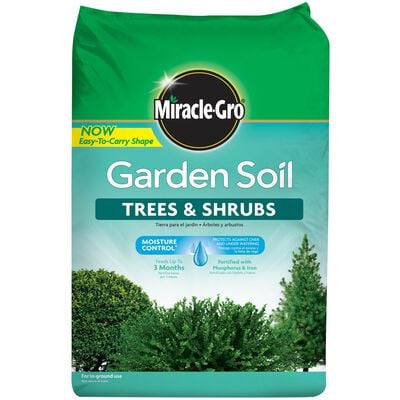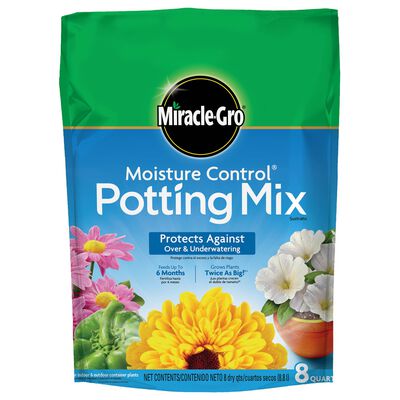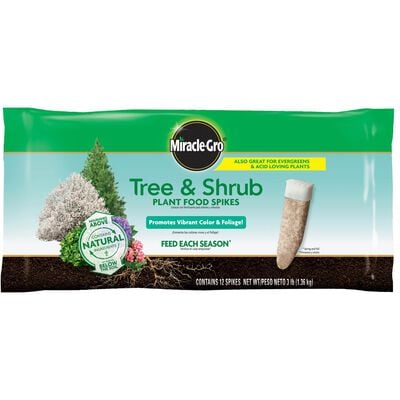
How to Grow Bamboo
Bamboo adds a wonderfully exotic look to your yard or garden.
- Choose the right bamboo for your growing conditions. Make sure it's clumping bamboo, not running bamboo.
- Plant bamboo in full to partial sun when you plant other warm-weather flowers and vegetables.
- Prepare the soil by adding Miracle-Gro® All Purpose Garden Soil.
- Water plants thoroughly at the time of planting and throughout the season.
- Starting a month after planting, feed plants regularly during the growing season with Miracle-Gro® Shake 'n Feed® All Purpose Plant Food.
- Grow in large containers, watering frequently.
- Prune sparingly (if at all) and remove old canes to keep plants tidy.
- If desired, divide clumps in the spring and replant immediately.
Some people love having bamboo in the garden while others are concerned that it will spread all over the place. The trick to keeping bamboo in control is to choose the right type. Bamboo adds a unique architectural structure to the garden, as well as a pleasant element of sound (when the wind blows through the canes). It's an excellent choice to plant as a living screen or barrier, too.
Here's how to grow bamboo outdoors.
How to Choose Bamboo
There are two main categories of bamboos: running types and clumping types. Running types can easily get out of control, and are designated as invasive species in certain areas. So the better choice for planting is clumping bamboo, which only increases 1 to 4 inches in diameter per year and spreads in a manageable way.
Cold hardiness is another factor when selecting bamboo, as is the mature size of the plant. There are bamboo types that grow to be 20 or 30 feet tall, while other species can stand in for small shrubs in the landscape. Check the plant tag for cold hardiness and height information.

Where to Plant Bamboo
Bamboo grows best in full to partial sun, in moist soils that aren’t swampy. Keep bamboo away from ponds and wet areas, as it doesn’t grow well with constantly wet feet.
When to Plant Bamboo
Bamboo is a warm-weather grass, and will do best if planted when it’s warm outside and the plants are actively growing. Plant at the same time you would plant warm-weather annuals like zinnia, portulaca, and coleus.
How to Prepare the Soil for Planting Bamboo
Ideally, the soil should be kept about as moist as a wrung-out sponge. Prepare the soil for planting by mixing 3 inches of Miracle-Gro® All Purpose Garden Soil into the top 6 to 8 inches of native soil. You can also improve individual planting holes by blending Miracle-Gro® All Purpose Garden Soil with the existing soil in a 50:50 ratio. Doing so will give the soil the structure and nutrients needed for good plant growth.
How to Plant Bamboo
Plant bamboo in the soil you’ve prepared, taking care not to bury the crown of the plant (the base of the plant right above the roots). Proper spacing between plants depends on the variety, so check the plant tag. Smaller clumping types can be spaced 2-3 feet apart, while larger clumping types require 6- to 8-foot spacing. Water thoroughly, then mulch around the plants to help keep the soil evenly moist.
How to Water Bamboo
Water bamboo twice a week for the first few weeks after planting. Bamboo plants are fairly shallowly rooted and require regular water throughout the growing season, especially if your area isn’t receiving rain. Once established, aim to give bamboo an inch of water per week.
How to Feed Bamboo
Bamboo plants are heavy eaters. Beginning a month after planting, feed bamboo with Miracle-Gro® Shake ’n Feed® All Purpose Plant Food, which contains natural ingredients to help feed plants both above and below the soil. Be sure to follow label directions.

How to Grow Bamboo in Containers
Smaller types of bamboo are better for containers than larger types. Select a pot that is at least 18 inches in diameter, fill it with Miracle-Gro® Moisture Control® Potting Mix, and plant the bamboo so that the crown of the plant is not buried. Water well. Bamboo growing in containers must be watered more frequently than bamboo growing in the ground.
Growing in containers means you can bring bamboo plants indoors for the winter. They will likely drop leaves, but should survive if you place them in an area with bright light, and cut back slightly on watering and feeding throughout the winter.
How to Prune Bamboo
You can prune bamboo in order to control height and encourage a thicker stand, but it isn’t necessary. Plus, once you prune a shoot, it will not grow anymore, which may not be as pretty in the landscape. If you must prune, do so in the late summer or fall.
A better way to keep individual clumps or stands tidy is to thin them by cutting entire canes to the ground. A good rule of thumb is to remove one-quarter of the growth each year, focusing on the oldest growth.
How to Divide Bamboo
Divide clumping bamboo by digging up the clump in the spring and chopping it into pieces. Plant the divided portions immediately where desired and water frequently.
Ready to start growing bamboo? Click on any of the product links above for more information, to purchase the product online, or to find a retailer near you.


